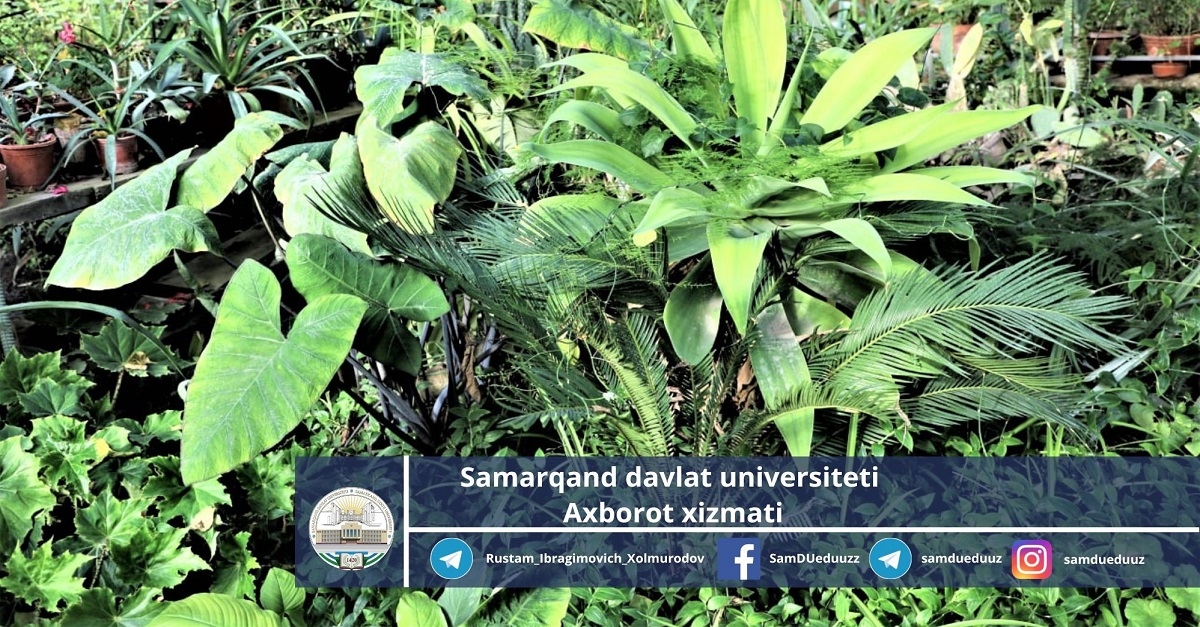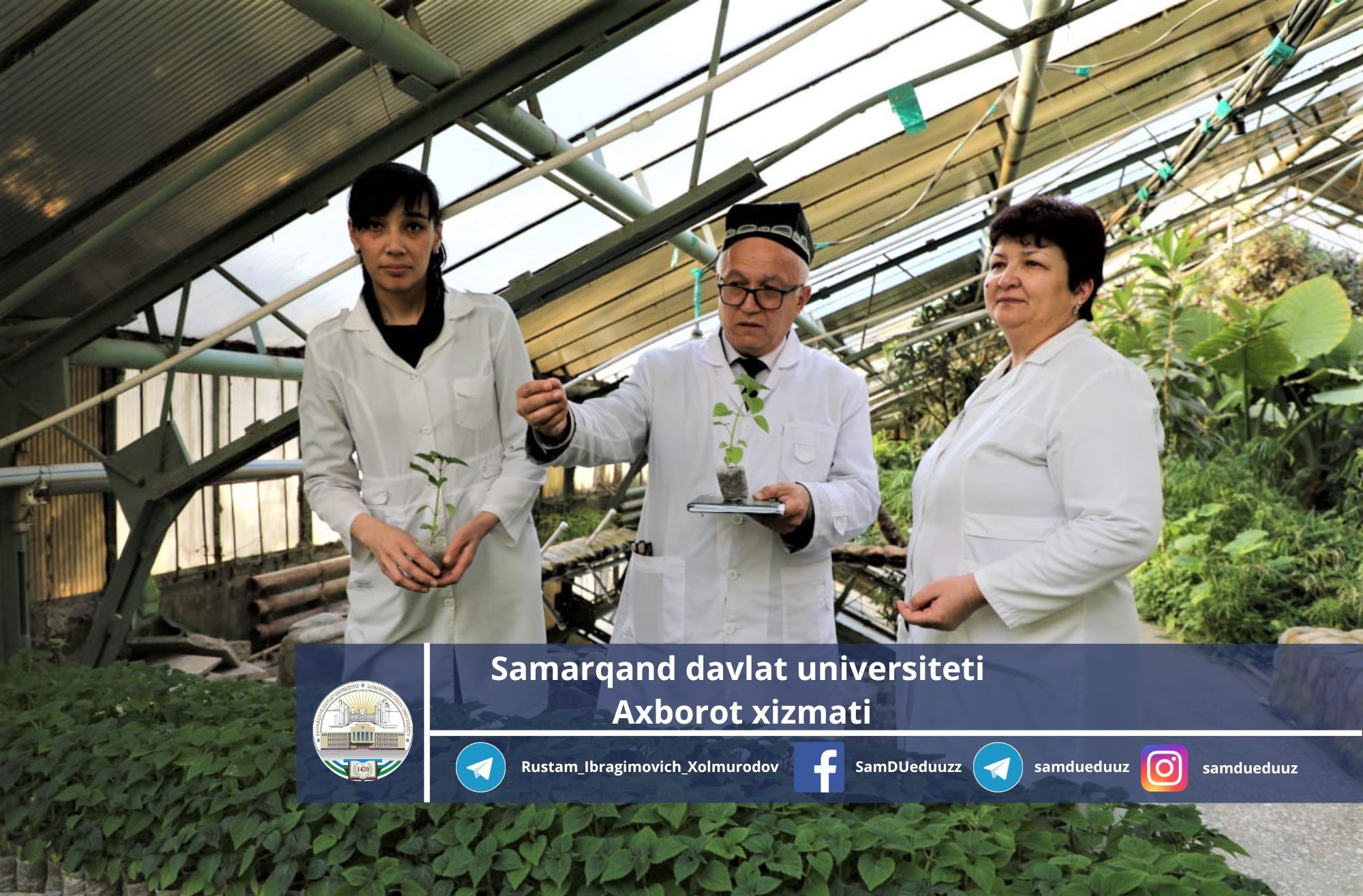VICTIMS OF THE PHARMACEUTICAL BUSINESS...

WE NEED TO BACK TO ABSOLUTELY CHEAP, HARMFUL MEDICINAL PLANTS...
Experts hit the bong
Today, the use of traditional medicine and medicinal plants among people is declining even in an era when the pharmaceutical business is at its peak. Today, even a person who is troubled by a headache suddenly starts taking medicine. However, every drug taken into the body, in addition to being a cure for a particular disease, does not remain without some harmful effects.
So, in this regard, what measures should be taken to return people to traditional medicine, and what are the ways to use medicinal plants to cure diseases that are widespread among the population? Scientists of the Department of Botany of Samarkand State University answered the following questions:

Boston Islamov - Associate Professor, Department of Botany, Samarkand State University, Candidate of Biological Sciences:
- The main medicinal plants of the Samarkand region grow in the areas of the Omonkutan gorge, located in the Urgut region. Unfortunately, medicinal plants have recently been seriously affected due to the wrong attitude of the population towards nature. As a result, many types of medicinal plants are reduced, some disappear. Despite our efforts, many plant species in this area are on the verge of extinction due to the fact that the local population does not properly use natural resources, and the culture of using medicinal plants has weakened.
In 2022, the President created the National Park on an area of 1.5 thousand hectares in the Omonkutan district of the Urgut district. The main purpose of this is to protect, increase and restore endangered species of flora and fauna, forest resources listed in the unique Red Book of mountain and foothill areas. Currently, efforts are being made to return the territories of the Amonkoton region arbitrarily appropriated by the local population to the national park.
According to research results, more than 1,600 plant species grow in the Omonkutan region, of which about 800 are used as medicinal plants in folk medicine.
Ziziphora is considered extremely curative in folk medicine. Among the population, this drug is mainly used to lower blood pressure, and is also useful for gastrointestinal and heart diseases. Deer grass tea improves digestion, regulates blood pressure and heart activity. In the treatment of traditional medicine, it is recommended for sore throat, indigestion, nausea, heartburn, as well as for nervous diseases. Such herbal teas have the properties to stimulate appetite, speed up digestion, and urination. It is also used in the treatment of diseases of the kidneys, heart, liver and gastrointestinal tract.

In scientific medicine, tinctures and preparations of the plant are widely used to improve the functioning of the cardiovascular system, lower blood pressure, as a diuretic. With angina, when sputum is difficult to come off, it is extremely useful to drink the leaves of the plant with a small amount of honey.
Also, plants such as ferula Kuhiston, tograikhon, ephedra, chokeberry, astragalus, immortelle (immortelle), growing in our region, are widely used in folk medicine as medicinal plants. Tea "Immortelle" is equivalent to the daily use of one lemon. This plant is effectively used in folk medicine to treat diseases of the liver, kidneys and biliary tract, as well as rheumatism and gout. The medicinal plant improves the digestive system.
-What plants that are on the verge of extinction, but useful for human health, can you name?
- Ferula sumbul, listed in the current conditions in the Red Book, was very common in the Amonkoton mountains in the 50s and 60s of the last century. Our ancestors made talc and widely used it in folk medicine. Hyaluronic acid has beneficial properties that strengthen the immune system, protect the body from premature aging, and increase vitality. A person who eats 2 mg of Ferul hyacinth powder per day will not be bothered by any disease.
Unfortunately, in more recent times traditional medicine has become commercialized. People began to collect hyacinths and sell them. As a result, this plant has completely disappeared in the mountains of Omonkutan.
Also in the Omonkutan mountains, halvai beh, that is, the sedum plant, disappeared. The root of this plant is used by the population to prepare nishol. Yetmak also has healing properties for many diseases. In the past, this plant was often found in the areas of Omonkuton. But now it's completely gone. Now this plant is imported to our region mainly from the mountains of Tajikistan.

Khyslat Khaydarov - Head of the Botany Department of Samarkand State University, Doctor of Biological Sciences, Professor:
- In fact, if people are concerned about any disease, they immediately resort to pharmaceutical preparations. In fact, many diseases can be cured quickly and easily, and most importantly harmlessly, with the help of traditional medicine and medicinal plants.
- How, in your opinion, can people return to traditional medicine and medicinal plants at a time when the pharmaceutical business is at its peak?

Traditional medicine is a time-tested medicine. If it benefits a person, he will not suffer any harm. In order to return our people from drugs and pharmaceuticals to cheap and safe folk remedies, it is first necessary to raise public awareness about medicinal plants and their beneficial aspects. In this regard, advertising is of great importance.
- What kind of research is being carried out at the Department of Botany of Samarkand State University on the cultivation and processing of medicinal plants?!
- Today, a number of medicinal plants are grown in the greenhouse of Samarkand State University, their biological properties are being studied. In this regard, it is important for our research scientists, first of all, to study the introduction, methods of reproduction and biological properties of medicinal plants that are on the verge of extinction, and plant their seeds in the places of extinction of plants. are being made.
The research center "Ibn Sino" was created at the Department of Botany of Samarkand State University. The purpose of this center is to identify plants used by Ibn Sina in medicine, establish their current names, study their biological properties, reproduce them, and conduct research on their use in traditional medicine. To date, we have been able to identify about 30% of the medicinal plants used by Ibn Sina. In addition, professors and scientists of the Department of Botany conduct more than 10 studies of the biological properties of medicinal plants.
Conversation with Iroda BEKMURODOVA
Information service staff of
Samarkand State University
The photographs were taken by Shavkat AKRAMOV.

